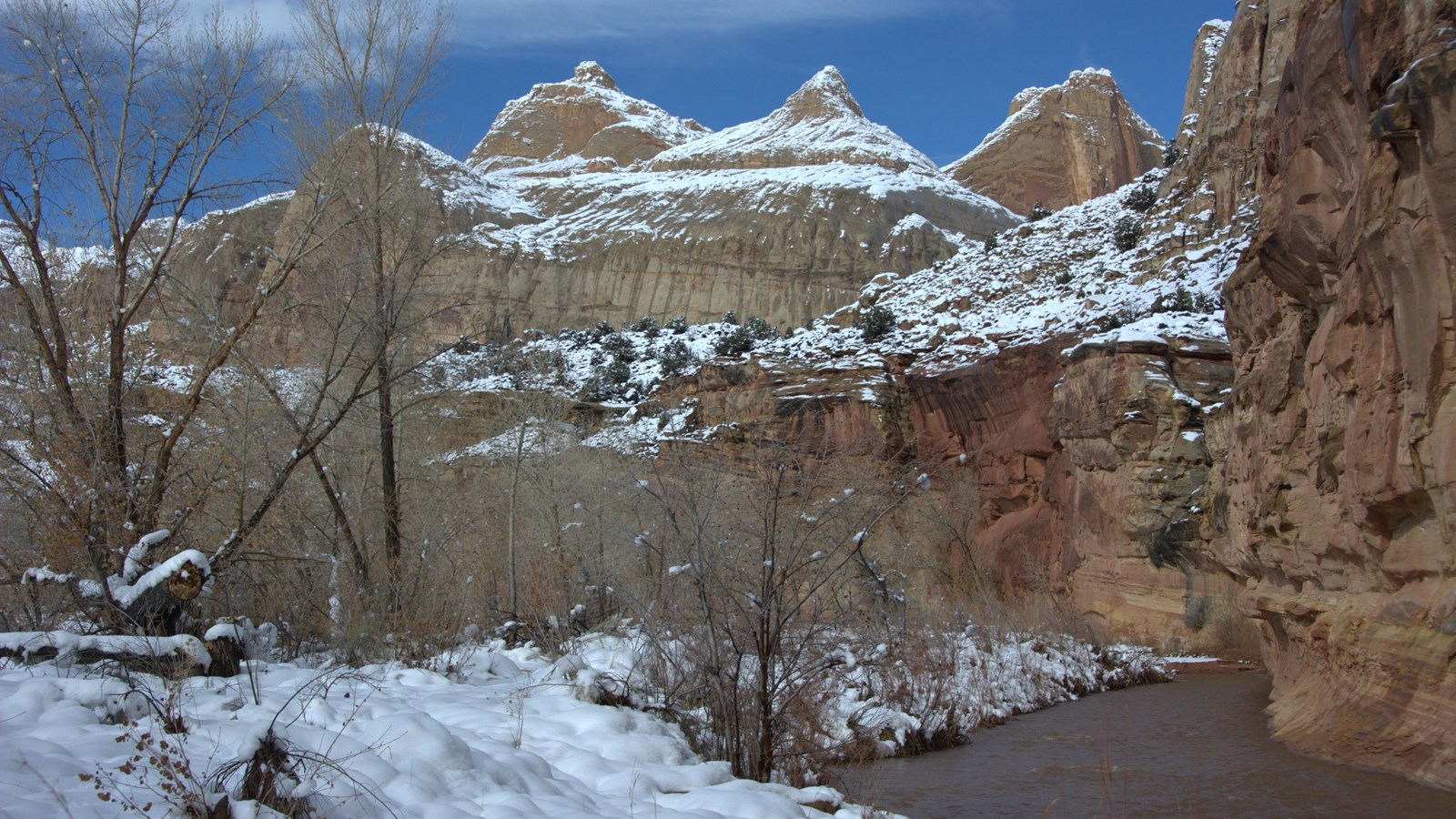Last updated: June 6, 2025
Place
Navajo Dome Viewpoint

NPS / Chris Roundtree
Navajo Dome is visible above the cliffs to your northwest. The Hickman Bridge parking lot and nearby pull-offs offer views of Capitol Dome as it rises over the river. Here’s a secret: Capitol Dome is not a dome! Rather, it is a narrow fin of rounded rock. Viewed from the side, it looks like a half-sphere. These sandstone features inspired half the park’s name: they reminded the European settlers of the U.S. Capitol Building in Washington, D.C.
You are now crossing the central axis of the Waterpocket Fold, the defining feature of Capitol Reef. But what is the Waterpocket Fold? It is a 100-mile-long warp in the Earth's crust. It is a classic example of a monocline, a one-sided bend or "stair-step" in the rock layers. The fold formed between 75 and 35 million years ago. This was a period of mountain building in western North America that we call the Laramide Orogeny, which also formed the Rocky Mountains. The squeezing and stretching pressures in the continent reactivated an ancient, buried fault line. Movement along the fault caused the west side to shift upwards relative to the east side. The overlying layers are draped down across the fault, like a carpet over a stair step—what we call a monocline.
You are now crossing the central axis of the Waterpocket Fold, the defining feature of Capitol Reef. But what is the Waterpocket Fold? It is a 100-mile-long warp in the Earth's crust. It is a classic example of a monocline, a one-sided bend or "stair-step" in the rock layers. The fold formed between 75 and 35 million years ago. This was a period of mountain building in western North America that we call the Laramide Orogeny, which also formed the Rocky Mountains. The squeezing and stretching pressures in the continent reactivated an ancient, buried fault line. Movement along the fault caused the west side to shift upwards relative to the east side. The overlying layers are draped down across the fault, like a carpet over a stair step—what we call a monocline.
